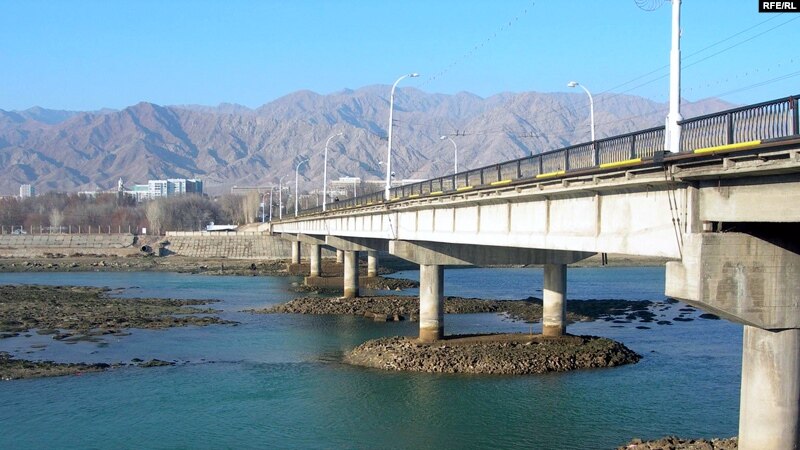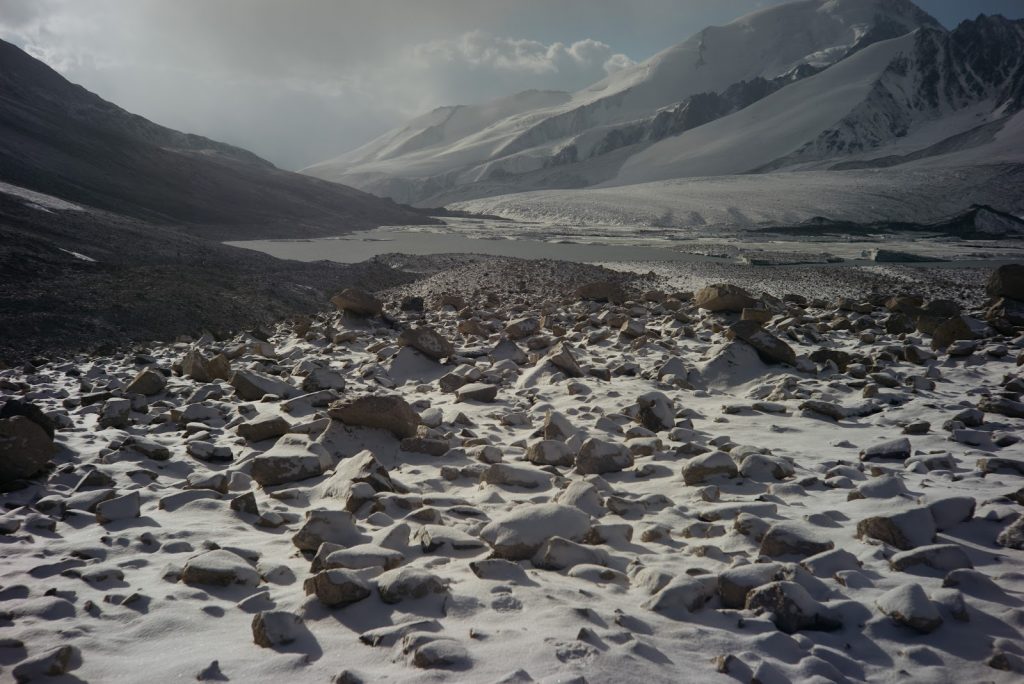Every year the water shortage will be felt more and more acutely. “First of all, this is due to irrational use of water in all five states of the region,” the experts emphasized at the CABAR.asia expert meeting dedicated to discussing this issue.

Recently, the impact of global climate change has grown tangible in the CA countries, especially this year. Drought and water shortages have led to a reduction in agricultural crops and the loss of livestock not only in the so-called “downstream” countries – Kazakhstan and Uzbekistan, but also in Kyrgyzstan – the “upstream” country, where several transboundary rivers of Central Asia are formed.
The situation in Tajikistan (also an upstream country) is not yet as acute as in neighboring countries. According to official data, about 60% of the water resources of the Aral Sea basin are formed on the territory of Tajikistan. But a global change in ecosystems has led to significant reductions in glacier areas, which poses threats both for the entire region and for Tajikistan itself.

Meteorological data indicate that Tajikistan has lost about 35% of its small glaciers over the past 70 years. Of the 13 thousand glaciers located in the mountains of Tajikistan, more than a thousand have disappeared by now. Moreover, annual floods of rivers and mudflows in the spring lead to enormous economic damage, crop losses and human casualties.
This year, there is also an substantial water dificency in Uzbekistan. The total irrigated area in Uzbekistan is 4.2 million hectares, and agriculture is the largest consumer of water resources – over 90%. According to the 2012 CIA World Fact Book, Uzbekistan ranks 14th in the world in terms of irrigated land (42,150 sq. Km).
The downstream countries ask the upstream governments to increase the discharge of water for irrigation, but there is not enough water there either. The lack of irrigation water in Kyrgyzstan itself this year led to discontent and rallies from farmers in the republic.

In general, this situation carries enormous risks for the countries of the region, including the issues related to food security.
Meanwhile, with a sufficiently large population growth, the countries of the region still use old technologies for water use, irrigation of farmland, irrigation of lands, in which a huge amount of water is lost and does not reach its destination. In addition, with the growth of the population and various economic projects, the consumption of water also increases.
This trend is inherent not only in the Central Asian region – it is a global problem.
According to projected UN estimates, population in Central Asia in 2020 increased approximately to 1 million 172 thousand people, or 1.66%. As of 2019, the population of Central Asia was 74 million 5 thousand 626, which is about 1% of the total population of the Earth. The share of Uzbekistan in is about 45%, Kazakhstan – 25%, Tajikistan – 13%, Kyrgyzstan and Turkmenistan – 8.5% each. (The forecast based on UN data was presented by the Worldometer project).
Of course, this forecast was made without taking into account the population decline in the region due to the global Covid-19 pandemic, but according to the same report, the birth rate in Central Asia is still positive – about 3 children per woman of reproductive age. Therefore, the population will grow, as scientists predict.
Water scarcity is one of the key challenges of our time, especially for the Central Asian countries.

“The problem of the Aral Sea that dried up due to human activities, about which the whole world knows and which they tried to solve, despite all the efforts of both the governments of the countries of the region and the UN and other world and international institutions, unfortunately, did not lead to success and to changes in the field of water use in this region, ”said an expert from Kazakhstan, Bulat Yessekin, a renowned ecologist and project manager in the field of environmental policy, water resources and sustainable development.
The Central Asian countries are among the most vulnerable according to many criteria, including climate vulnerability, the access of water and water storages.
“The difference between our region and others, for example, from Europe, is that we are located in a closed, unified ecosystem of the Aral Sea basin. It differs in that we have no access to the ocean, and our countries are in an emergency climate,” he said.
According to the International Fund for Saving the Aral Sea, the Central Asian countries are at the “red line” in terms of the level of water supply for the population, beyond which conflicts begin. Forecasts and reports from international and Central Asian specialized institutions show that water reserves and water availability in Kazakhstan will rapidly decline because of climate change, melting glaciers and reduced river flows.
This is influenced by a number of factors, one of which is the efficient use of water. Unfortunately, Central Asia ranks among the lowest in the world in terms of water efficiency.
“We are in a very strong dependence on each other, and, of course, we will not be able to achieve a result by solving problems on the efficiency of water use alone. Therefore, we say that the future of our region, the future of our population will depend on how we are able to cope with these challenges for water resources. And all those professionals, international organizations, regional organizations today must take the most decisive measures in order to consistently find ways out of this situation, ”the expert notes.
“Unfortunately, the governments of all countries, and this is typical of all the governments of the planet Earth, are late all the time. Because experts started talking about it decades ago, but only today governments at the international level are beginning to take decisive measures on the Paris Agreement, to reduce greenhouse gas emissions, but all this is catastrophically, tragically late,”says Esekin.
“We need to understand the main thing and convey to the leadership of our countries – the situation with water is changing much faster than predicted in our most pessimistic forecasts. Glaciers are melting faster than we expected. In Central Asia, we are heading towards a water crisis, but we must understand one thing – the water crisis is a consequence of the degradation of ecosystems. Our ecosystems should become the main key word for determining the situation in the countries of Central Asia. They are very vulnerable and degrade quickly. And it is necessary to consider water resources in conjunction with all other resources, in general to look at the situation in the basin and in the integrity of the ecosystem, ”he stressed.
Other specialists who took part in the CABAR.asia expert meeting on water problems agree with Esekin. They unanimously noted that without a coordinated approach of all countries in the region, without changing the development of new strategies and approaches for the rational use of water, the situation could get out of control much faster than was given in the most pessimistic forecasts, which we are already witnessing.

Kyrgyzstan, a mountainous country of the upper formation of the water flow, from where the Syr Darya, a river that feeds all the countries of Central Asia, found itself with the problem of water shortage this year.
“But if in the neighboring countries located downstream of this river, the drought is large-scale, then in Kyrgyzstan the lack of water is local in nature. There is a motley picture, when in some parts of the republic there is enough water, while in others it is not enough for everyone. And if earlier it was of a cyclical nature, then this year even the fertile Chui valley was left without water, ”says Ryskul Usubaliev, an expert and researcher in the field of climate of high mountain zones, melting glaciers and water resources from Kyrgyzstan, who has worked for a long time in the system of the State Committee for Nature Protection and Hydrometeorological center of the country.
This happened due to catastrophic decrease of precipitation in the spring-summer period of this year. The melting of glaciers has not yet begun, so there is little water in all river basins of the Kyrgyz ridge, so there is not enough water for irrigation. Because of the water, conflicts and quarrels occur within villages and districts. And this is only one problem out of many. Another challenge is that Kyrgyzstan, due to its geographic location, is obliged to provide water to the downstream countries: Uzbekistan and Kazakhstan. Therefore, the country faces a difficult task.
“Therefore, we need to think and find solution together so that there are no conflicts in the future, because, not to mention other countries, the lack of water is already leading to conflicts between auls and villages within Kyrgyzstan itself,” Usubaliev said.
In his opinion, the existing mechanism and methods of water distribution should be improved.
“Only once we make good use of the available water resources inside the country, only then we will be fine, and we will be able to give the remaining water to neighboring countries. For example, in the Chui Valley, Kyrgyzstan uses only about 15% of the water available in the republic, the rest of the water goes into Kazakhstan’s territory. Therefore, we need to solve these water distribution mechanisms together, together, and find a way out of difficult situations that every year either intensify, or, more often, all these negative processes associated with water shortages are repeated from year to year,” the expert said.

“In Tajikistan, water scarcity and issues of drought are less pronounced than in downstream countries,” says Professor Khodzhimuhammad Umarov, a Ph.D. in economics from Tajikistan.
“We need to look at Central Asia as a whole, from glaciers to deserts, because a significant part of the runoff disappears in these deserts. We need to create a joint commission, include geologists and hydrologists there, make calculations and see how much water we lose due to seepage and evaporation in those numerous reservoirs. In addition, in countries located deeper into South the air temperature is much higher in summer,”says Umarov.
Professor Umarov believes that one of the methods of inefficient use of water is to store it in the desert zones of the downstream countries.
“Because of the intense heat, evaporation, strong water infiltration, it is ineffective to store water in those small reservoirs that were built in the past in Uzbekistan and Kazakhstan, these reservoirs are not needed there,” he said.
According to him, “it is enough for the upstream countries – Kyrgyzstan and Tajikistan – to accumulate water in reservoirs near their power plants”.
“Our hydroelectric power stations in Tajikistan and Kyrgyzstan are located in mountainous regions, where the temperature is lower, the filtration level is also much lower, because they lie on rocks and the level of evaporation there is also lower. This is more favorable for the conservation of water supplies. Therefore, we need to think together about where to store water. Naturally, it is better to store it in mountainous areas. From this position, the construction of large reservoirs justifies itself. I am convinced that filling the Rogun HPP reservoir is in the interests of all Central Asian countries,” Umarov said.
In the downstream countries, there concerns are – if most of the water supplies are stored only in the upstream countries, then the latter will use this factor as a political lever of pressure on the downstream countries.
However, according to Umarov, the time for political disputes in Central Asia is over. He cited as an example the activities of the President of Uzbekistan Shavkat Mirziyoyev, noting that he changed the policy regarding the construction of large hydroelectric power plants and reservoirs in Central Asia and the positive effect of such a policy was felt not only in Uzbekistan itself, but also in the upstream countries.
“Now the days have passed when water resources were used to implement their own policies. Now this will be gone. Now is the time to find the best options for storing and saving water,”Umarov is convinced.
All experts recommended uniting efforts to conserve water resources of the region, and to work collectively on ensuring efficient water use.
“It is necessary to do away with canals, where the base consists of soil, where there is a powerful infiltration of water. It is necessary to abandon the jet water supply of the fields, it is necessary to switch to more expensive, but more effective methods of irrigation: subsoil methods, impulse-rain method, drip method. Many different modern methods help save water many times over. We need to implement such a joint policy so that we can help each other every year,” said Professor Umarov.
In addition, according to experts, it is necessary to collaborate on preservation of common ecosystem of the countries of the region.
“We cannot preserve any separate organ or resource in a living system, called the Aral Sea basin, without caring and noticing other components of this living organism,” said Bulat Yessekin.
According to him, natural ecosystems support the global climate, regional climate, biotechnological flows, global circulation of water, transport of matter and energy.
“That is, the upper countries and the lower countries – we all live in a single organism. And we need to convey this message to governments and consider water not just as a resource and how to divide it better, but to consider it in conjunction with the whole living organism in which people, economy, natural resources, forests, glaciers, rivers and lakes are integral parts of one entity, ”he said.
Bulat Esekin believes that now the main task of the countries of the region is to revise strategies taking into account global changes, economic trends and population factors.
“The previous strategies, and this is already obvious, do not work. They lead to conflicts. We need to see what new strategies we need to learn to survive and achieve sustainable development,” said Bulat Esekin.

